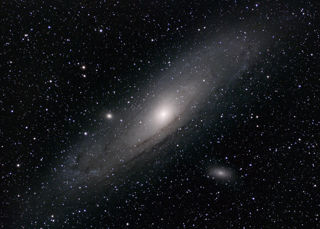
Soyuz 7K-OK Spacecraft
Soyuz 7K-OK Spacecraft
A human-rated Russian space vehicle. The external features of this Soyuz capsule match the Soyuz 7K-OK variant that flew between 1967 and 1971, making this the earliest, most complete, example on display in the West. One suggestion is that this Soyuz is a model, but it is a unique example because it has a lot of internal engineering in the service module, such as the spherical pressure gas vessels. However, the presence of polyurethane foam in the descent module and the amount of genuine parts offers other possibilities. It is plausible that this is a genuine Soyuz 7K-OK, taken off the production line incomplete due to an aborted mission or changes in the Soyuz design. Subsequently it was mocked up for display purposes outside a factory in Georgia, where it remained until it was acquired by the National Space Centre.Designed to carry three cosmonauts into low Earth orbit, a Soyuz spacecraft comprises three modules including a descent module, an orbital module and a service module.
The descent module is designed for the cosmonauts to sit in during launch and landing. This is the only part of the spacecraft that comes back to Earth; the other two modules are left to burn up on re-entry to the Earth’s atmosphere. The descent module has an overhead hatch, opened from either side, and two side hatches housing the primary and reserve parachute systems. Cosmonauts sit in couches for launch and re-entry in very cramped conditions.
The orbital module is designed to offer additional living space and room for cargo. They normally contain equipment needed to survive, food, waste management services, and an air-purifying unit.
The service module supports the descent module on its forward face, housing the electronics and fuel tanks for the propulsion system. A 45 centimetre deep pressurised section contains batteries, power conditioning systems for the twin solar panels and control systems. The unpressurised rear section holds the propulsion system and its four spherical containers.
All images:
-
![Soyuz 7K-OK Spacecraft]()
Soyuz 7K-OK Spacecraft -
![Soyuz 7K-OK Spacecraft - with labels to show the three main sections]()
Soyuz 7K-OK Spacecraft - with labels to show the three main sections -
![Soyuz 7K-OK Spacecraft]()
Soyuz 7K-OK Spacecraft -
![Soyuz 7K-OK Spacecraft]()
Soyuz 7K-OK Spacecraft -
![Soyuz 7K-OK Spacecraft]()
Soyuz 7K-OK Spacecraft -
![Soyuz 7K-OK Spacecraft]()
Soyuz 7K-OK Spacecraft -
![Soyuz 7K-OK Spacecraft]()
Soyuz 7K-OK Spacecraft -
![Soyuz 7K-OK Spacecraft]()
Soyuz 7K-OK Spacecraft -
![Soyuz 7K-OK Spacecraft]()
Soyuz 7K-OK Spacecraft -
![Soyuz 7K-OK Spacecraft]()
Soyuz 7K-OK Spacecraft -
![Soyuz 7K-OK Spacecraft]()
Soyuz 7K-OK Spacecraft -
![Soyuz on display in Georgia]()
Soyuz on display in Georgia -
![Soyuz on display in Georgia]()
Soyuz on display in Georgia -
![Soyuz on display in Georgia]()
Soyuz on display in Georgia -
![Soyuz on display in Georgia]()
Soyuz on display in Georgia
More information
Object number
2000-54
Location
Welcome Hall
Has this object been into space?
No
Dimension - Dimension, Value, Measurement unit
Height: 4.0m
Length: 9.2m
Width: 2.7m
Weight: 3000kg
Material
Aluminium alloy
Polyurethane foam
Glass
Associated Organisation
Roscosmos
Associated Place
Georgia
Object Production Date
1967 - 1971
Object Production Organisation
RSC Energia
Object Production Place
Russia
On Display Status
On display
Copyright and Photos
Photography is shared via the license below.
However, some objects on this website are on loan to the National Space Centre and are being shared through the permission of their owners.
Commercial use of images from this website is not allowed without additional permissions being granted. To request permission to use images for purposes not covered in the license below, please contact [email protected]
Individual objects on loan to the National Space Centre may have additional copyright permissions, so advice should always be sought before use.
![]()
This work is licensed under a Creative Commons Attribution-NonCommercial 4.0 International License.
















